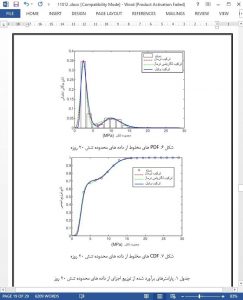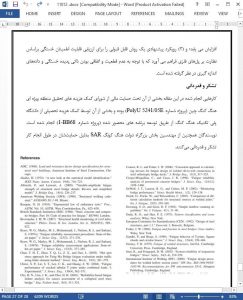Abstract
A fatigue reliability model which integrates the probability distribution of hot spot stress range with a continuous probabilistic formulation of Miner’s damage cumulative rule is developed for fatigue life and reliability evaluation of steel bridges with long-term monitoring data. By considering both the nominal stress obtained by measurements and the corresponding stress concentration factor (SCF) as random variables, a probabilistic model of the hot spot stress is formulated with the use of the S-N curve and the Miner’s rule, which is then used to evaluate the fatigue life and failure probability with the aid of structural reliability theory. The proposed method is illustrated using the long-term strain monitoring data from the instrumented Tsing Ma Bridge. A standard daily stress spectrum accounting for highway traffic, railway traffic, and typhoon effects is derived by use of the monitoring data. Then global and local finite element models (FEMs) of the bridge are developed for numerically calculating the SCFs at fatigue-susceptible locations, while the stochastic characteristics of SCF for a typical welded T-joint are obtained by full-scale model experiments of a railway beam section of the bridge. A multimodal probability density function (PDF) of the stress range is derived from the monitoring data using the finite mixed Weibull distributions in conjunction with a hybrid parameter estimation algorithm. The failure probability and reliability index versus fatigue life are achieved from the obtained joint PDF of the hot spot stress in terms of the nominal stress and SCF random variables.
Introduction
Fatigue is a progressive and localized process in which structural damage accumulates continuously due to the repetitive application of external loadings such as vehicles for steel bridges; while these applied loadings may be well below the structural resistance capacity. In a pervasive perspective of metal fatigue, the fatigue process is deemed to initiate from an internal or surface flaw where the stresses are concentrated, and originally consists of shear flow along slip planes. Suffering from an amount of load cycles, this slip generates intrusions and extrusions and ultimately results in forming into a crack. With the propagation of cracks, it will eventually lead to fatigue failure in the structural components �Schijve 2001. Fatigue is one of the main causes involved in fatal mechanical failures of civil engineering structures as well as transportation facilities and infrastructure systems. Such devastating events occur suddenly and result in heavy losses of life and property �Reed et al. 1983; Fisher 1984; Stephens et al. 2001.
Conclusions
In this study, a fatigue reliability model has been proposed by uniquely integrating the probability distribution of hot spot stress range with a continuous probabilistic formulation of Miner’s rule, and has been applied for probabilistic fatigue life assessment of Tsing Ma Bridge by use of the strain monitoring data from a long-term SHM system which has been permanently installed on the bridge. Considering highway and railway traffic and typhoon effects, a monitoring-based standard stress spectrum was achieved by carefully examining one-year strain measurement data. The method of finite mixture distributions in conjunction with a hybrid parameter estimation approach was applied to generate the PDF of stress range, while SCFs at fatigue-critical locations were calculated by finite-element analysis method.











